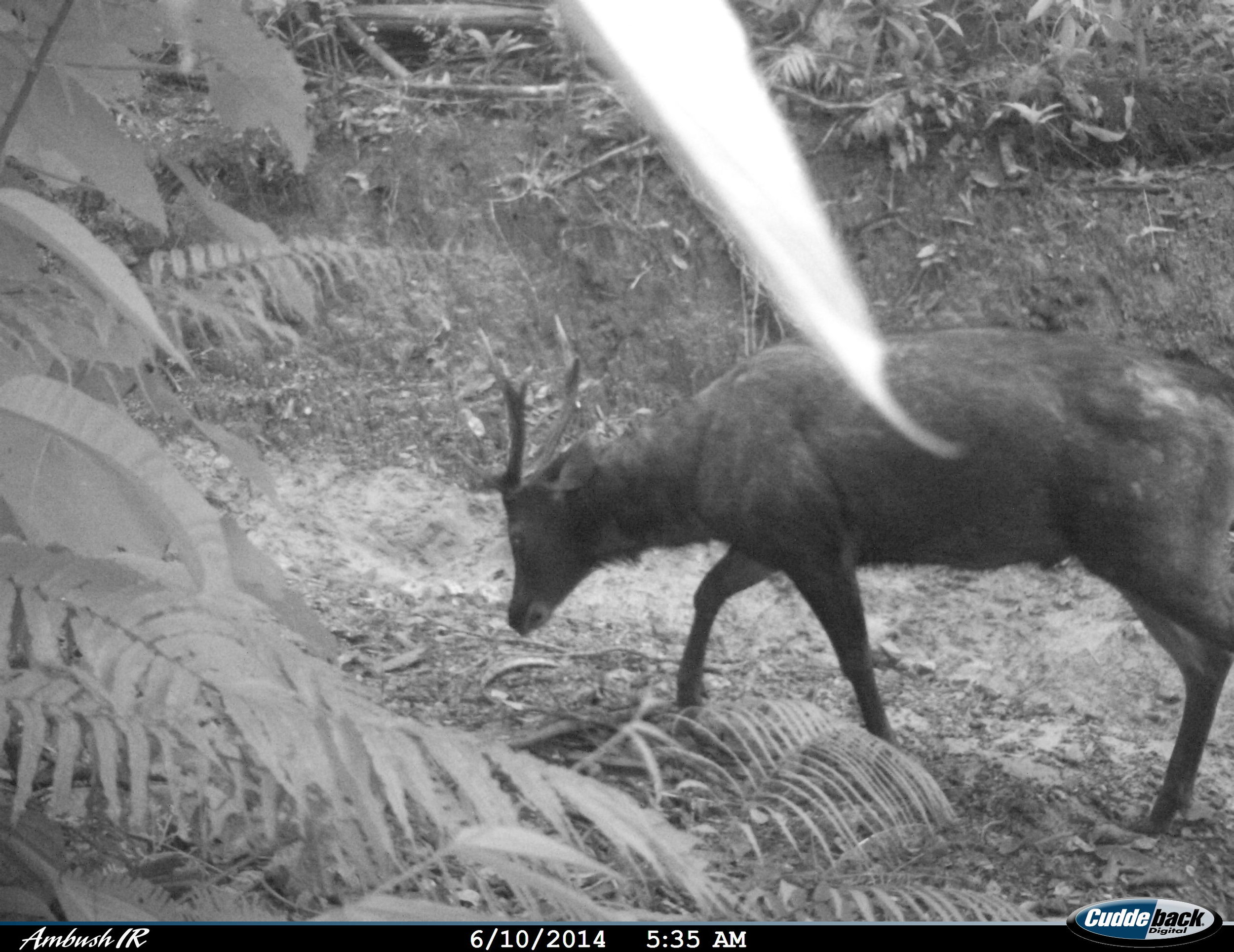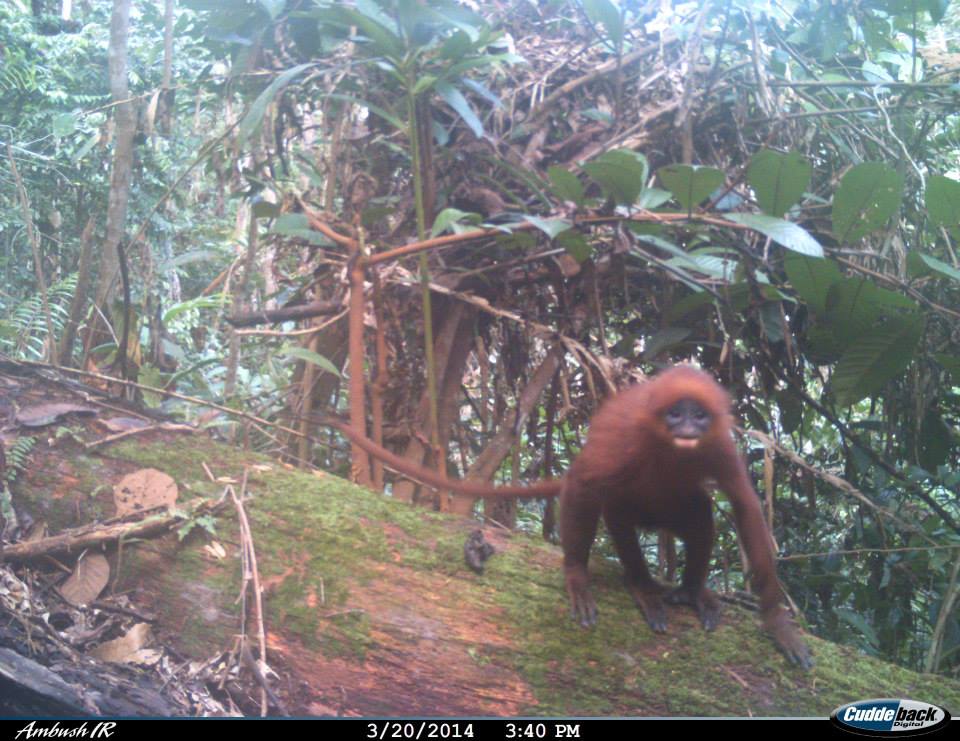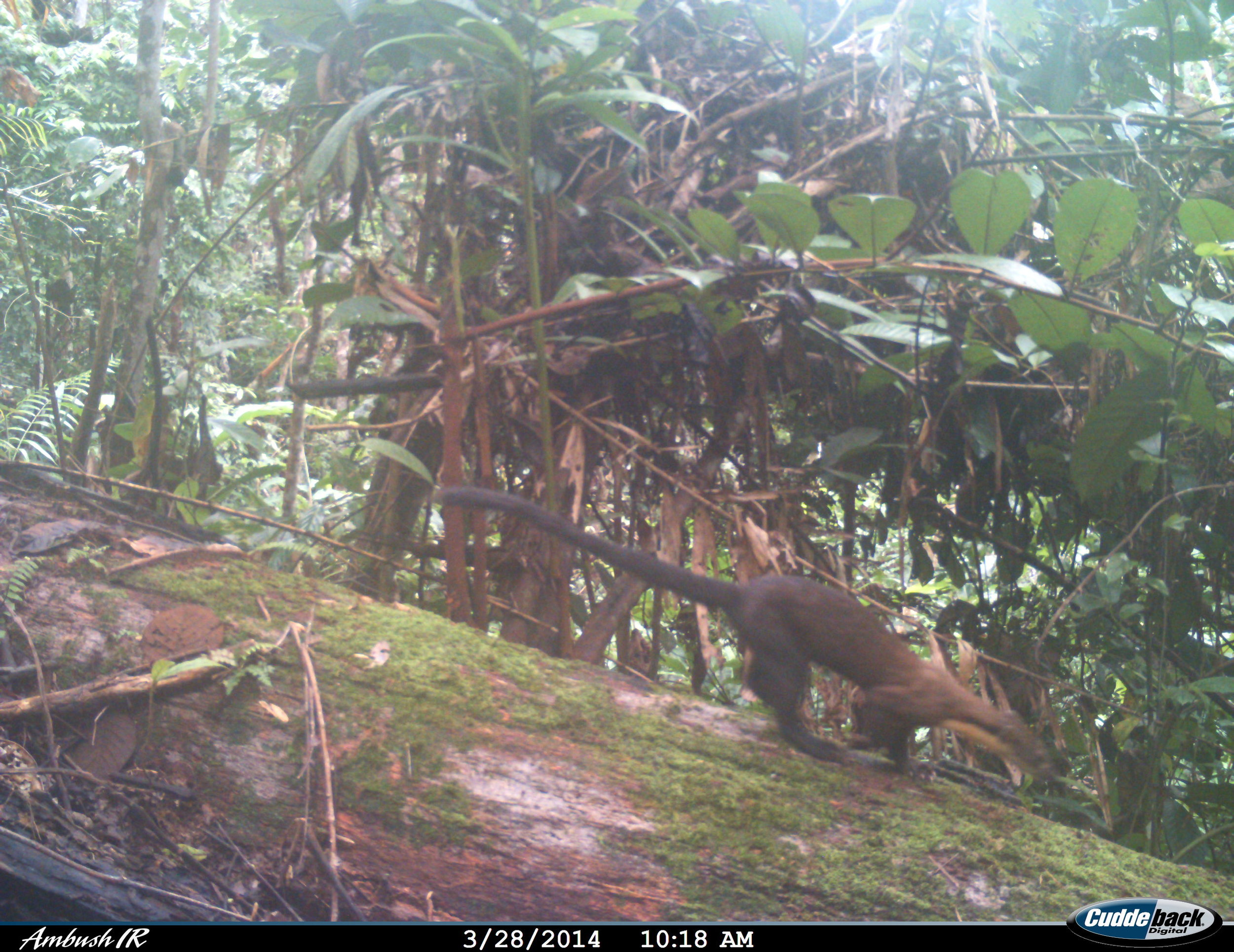The Orangutan Foundation are proud to be partners of a groundbreaking Camera Trapping Project with Yayasan Orangutan Indonesia (Yayorin) and The Orangutan Tropical Peatland Project (OuTrop) - allowing us to document animals that have never been seen before in the remote and highly diverse area of Belantikan Hulu. Here, Susan Cheyne, co-coordinator of the project, tells us about the initial results... Check out the stunning footage we got; sun bears here, an orangutan here and a pangolin here.
The Belantikan-Arut area in Central Kalimantan, whose core area is Belantikan Hulu, is a spectacular landscape spanning 5,000km2 hectares across Central and West Kalimantan, is known to contain the largest single population of orangutans outside of protected areas.
The results of this work are very exciting. Not only were Sunda clouded leopards confirmed in this forest but also the elusive banteng. The banteng is a large and rare wild cattle species and is endemic to Borneo but is not widespread across the island.


Of course orang-utans featured on the camera traps, adding to the recent information that the man of the forest in fact spends a lot of time on the ground. Not only were large males caught on camera but juveniles and mothers and infants travelling on the ground.
Of great interest is the number of deer and bearded pigs especially the majestic Sambar deer, largest of the 5 species on Borneo. Good eating for a clouded leopard!

The white-fronted langur (see closely related species - the red langur - pictured above) is normally swinging up in the canopy, but like many primates, also comes to the ground. This species has a very patchy distribution across western Borneo and confirmation of the presence in Belantikan is important new information.

Sun bears are the smallest of all the world’s bears and have the longest tongue of any bear! Females generally have 1-2 cubs each year. We were fortunate to have surveyed during the time of year when cubs are venturing out and about with their mother and captured some wonderful photos and videos of their interactions.

The little yellow-throated marten is apparently widely distributed throughout Borneo but not much is known about these animals. Living alone or in pairs, they are active at both day and night. Although listed as IUCN Red List Least Concern, nothing is known about the population numbers on Borneo.

Camera traps provide an amazing and unique view into the wildlife of the forests we are working to protect. Almost each photo provides new information about behaviour, distribution or activity of these animals."
Check out our recent blog for more amazing photos, or get in touch about any of our projects!




